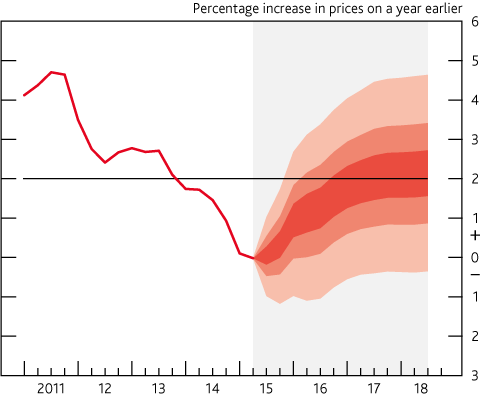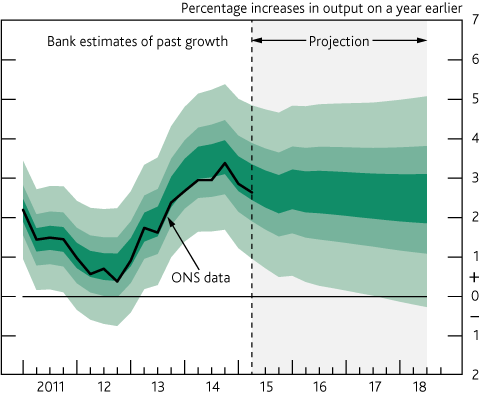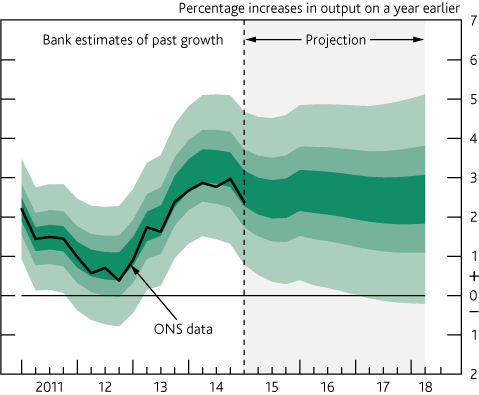Global economic and financial developments
UK-weighted world GDP growth slowed in Q1, but is likely to have risen in Q2. Further ahead, global growth is expected to be slightly weaker than projected in May, reflecting developments in Greece and China. Dollar oil prices have fallen by 12% since the May Report. Financial market prices implied a slightly faster pace of Bank Rate rises than in May, although the pace of increases remains gradual. UK long-term interest rates also rose, along with those in other advanced economies. The sterling ERI rose further.
Read more on global economic and financial developments
Demand and output
UK GDP growth bounced back to 0.7% in Q2, following weakness in Q1. The increase in aggregate demand continues to be accounted for by rising domestic expenditure. Consumption growth was robust in Q1, supported by rising real incomes and easing credit conditions. Business investment also rose. The current account deficit remained wide at 5.8% of GDP in Q1, but within that the trade deficit has been narrowing. In the near term, GDP is expected to continue growing at around its historical average rate.
Read more on demand and output
Supply and the labour market
Unemployment and average hours were unchanged and participation fell in the three months to May. Survey measures of capacity utilisation ticked up. The MPC’s best collective judgement is that, taken together, alongside top-down estimates, these developments leave the degree of slack in the economy broadly unchanged from that in the May Report. Wage growth has picked up, reflecting both the past narrowing in slack and a pickup in productivity growth.
Read more on supply and the labour market
Costs and prices
CPI inflation was 0.0% in June. The current weakness in inflation can largely be accounted for by lower energy, food and other goods prices. But it also reflects weak growth in domestic costs. Supply chain indicators of current cost pressures, combined with the expected strengthening in labour cost growth, are consistent with inflation rising back to 2% within the next two years. Overall, the MPC judges that inflation expectations remain well anchored.
Prospects for inflation
CPI inflation was 0.0% in June, well below the MPC’s 2% target. That undershoot largely reflects external factors but domestic cost pressures have also been weak. Inflation is projected to rise around the turn of the year as past falls in energy prices begin to drop out of the annual comparison. Thereafter, domestic pressures are likely to build alongside a steady expansion in demand, which absorbs the remaining economic slack. The MPC judges that it is currently appropriate to set policy so that it is likely that inflation will return to the 2% target within two years. Conditional on a gradual rise in Bank Rate, such as that currently implied by market yields, that is judged likely to be achieved.




